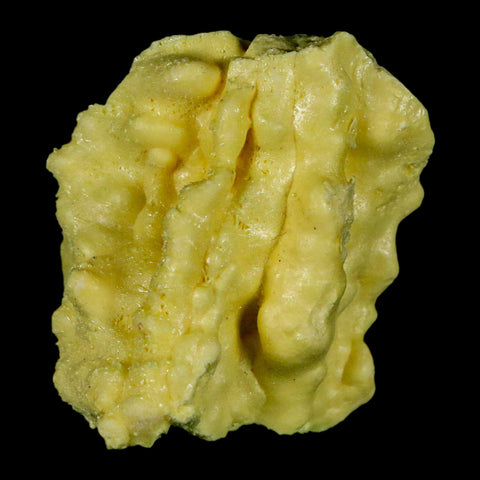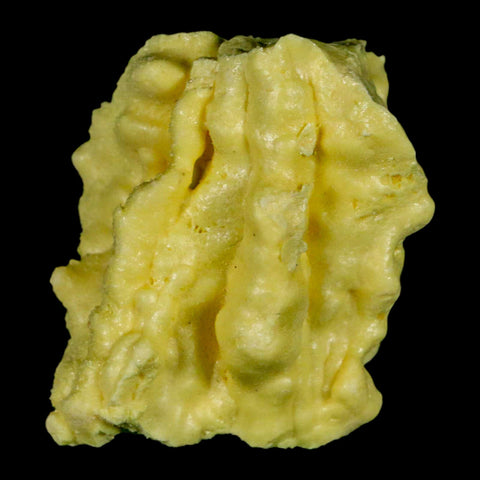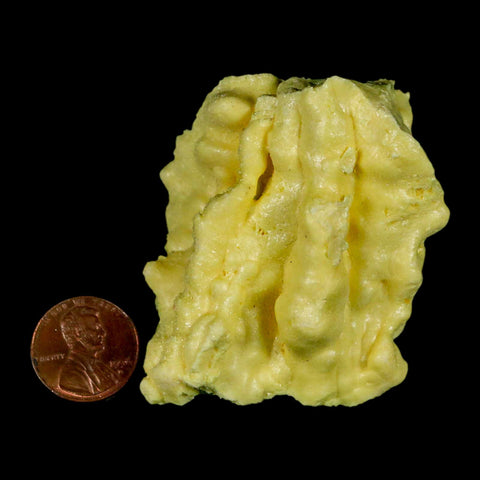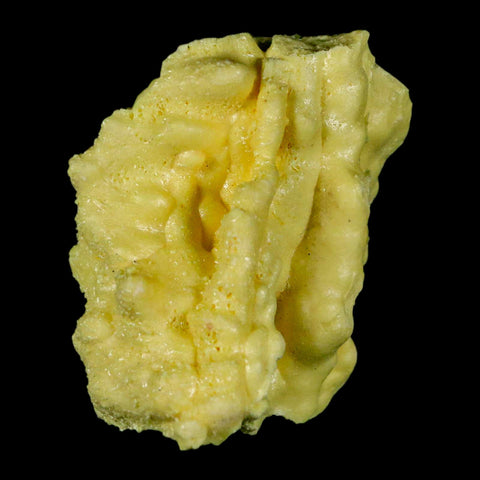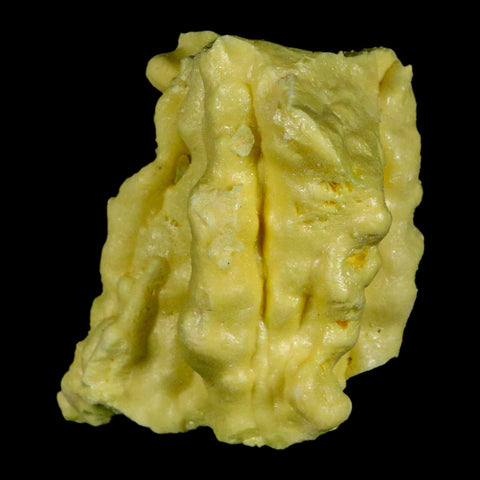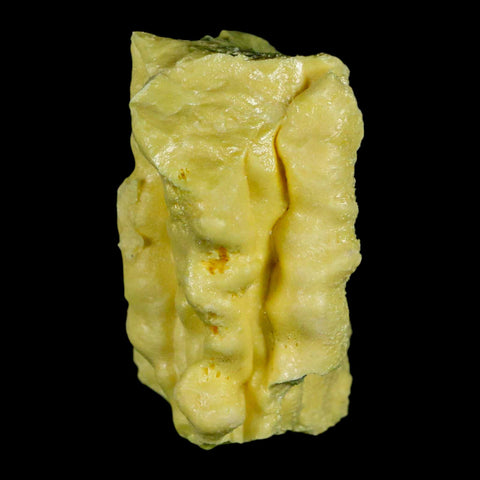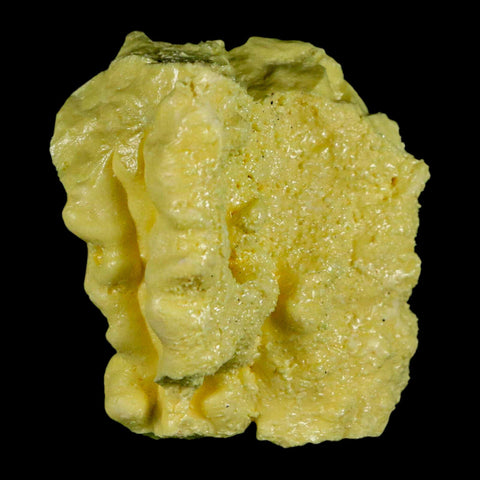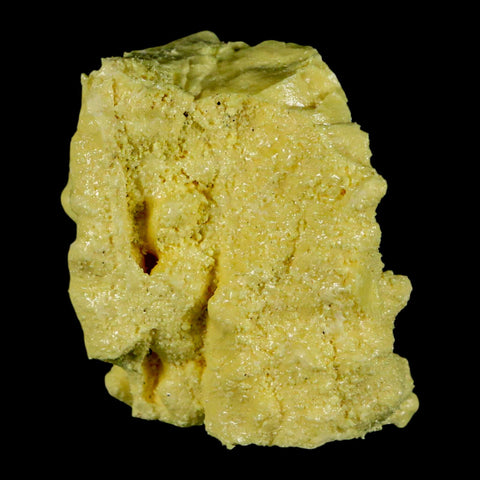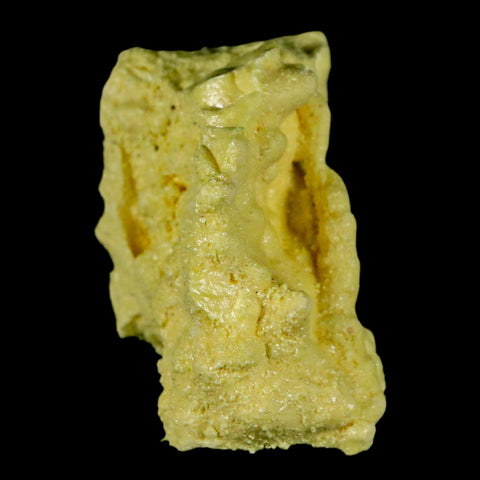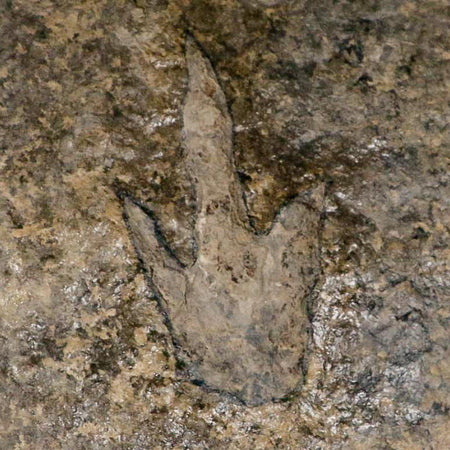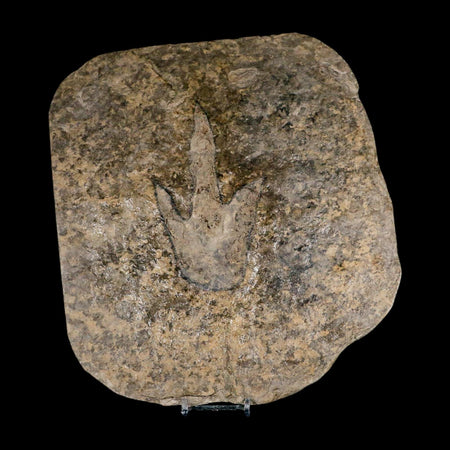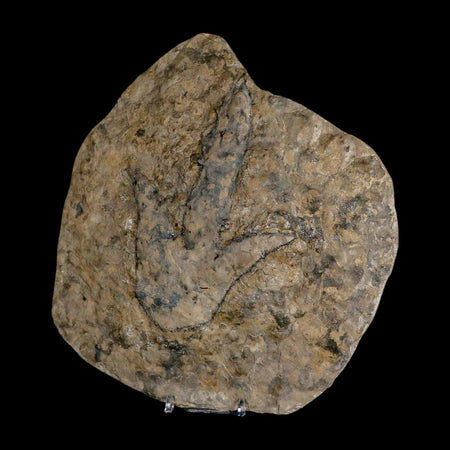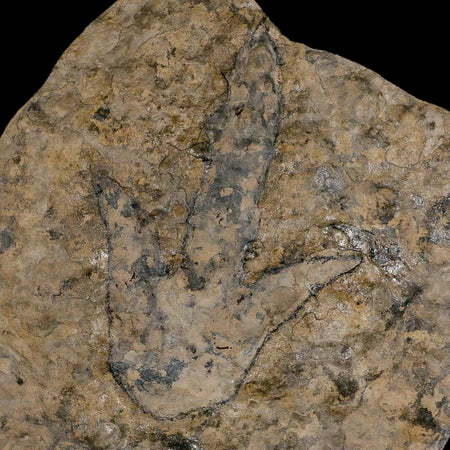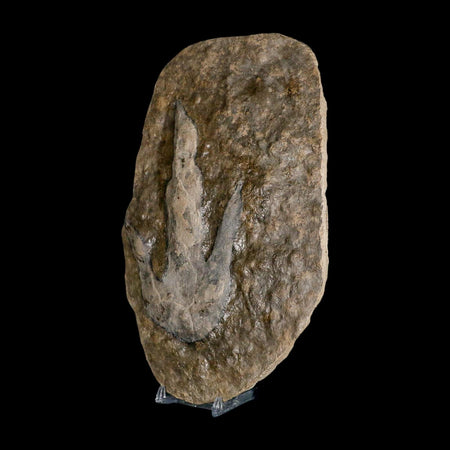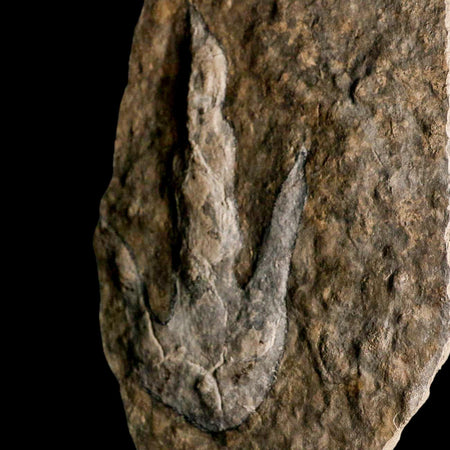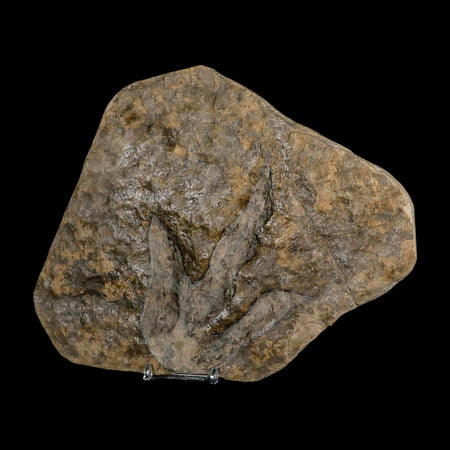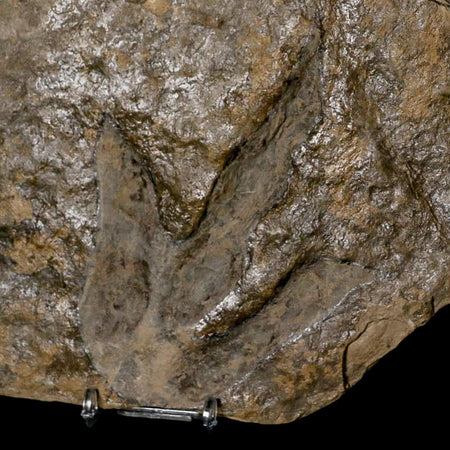2.3" Rough Bright Yellow Sulfur Crystal Mineral Specimen From Louisiana
Location: Sulfur, Louisiana, United States
Weight: 3.4 Ounces
Dimensions: 2.3 Inches Long, 2 Inches Wide, 1.2 Inches Thick
The item pictured is the one you will receive.
Sulfur, particularly native sulfur, has been historically significant in Louisiana due to its unique geological formation and economic importance. The sulfur deposits in Louisiana are primarily associated with the caprock of salt domes, a geological structure common in the Gulf Coast region.
These sulfur deposits formed through bacterial reduction of anhydrite (calcium sulfate) within the caprock. This process, termed bacterial sulfate reduction, uses hydrocarbons as an energy source and generates hydrogen sulfide, which subsequently reacts with oxygenated groundwater to produce elemental sulfur. This biogenic mechanism differentiates Louisiana's sulfur deposits from those created by volcanic or other geological activities.
Initial sulfur mining efforts in Louisiana were hindered by unstable overlying sediments and quicksand. The introduction of the Frasch process by Herman Frasch transformed sulfur extraction by injecting superheated water into the sulfur deposits to melt the sulfur, followed by pumping the molten material to the surface with compressed air. This technique enabled economically feasible mining in difficult geological conditions and positioned Louisiana as a leading global sulfur producer for many years.
Sulfur, commonly known as "brimstone," served as a vital raw material across multiple industries, including the manufacture of sulfuric acid, fertilizers, chemicals, and explosives. The Frasch process produced sulfur of exceptionally high purity, enhancing its industrial value. Although direct sulfur extraction in Louisiana has largely been discontinued due to economic considerations and the rise of sulfur recovery from natural gas processing, the region’s sulfur deposits and the pioneering mining techniques employed there continue to represent significant milestones in both the state’s industrial history and geological research.


